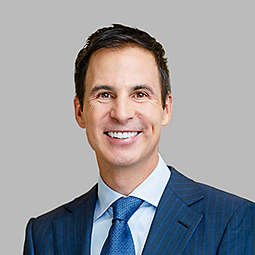Overview
Overview
NYLI Winslow Large Cap Growth Fund seeks long-term growth of capital.
Diversified growth strategy
The team seeks compelling growth opportunities among U.S. large cap stocks, to provide long-term growth potential while mitigating downside risk.
"No Preferred Habitat"
Winslow's active, flexible approach allows the team to diversify the portfolio across three different, yet complementary, types of growth companies.
Highly specialized growth equity manager
Winslow specializes in growth equity investing. The Fund's portfolio managers have over 100 years of investment experience.
Performance
Performance
Class A & INV: 5.5% maximum initial sales charge; a 1% CDSC may be imposed on certain redemptions made within 18 months of the date of purchase on shares that were purchased without an initial sales charge. Class B: CDSC up to 5% if redeemed within six years. Class C: 1% CDSC if redeemed within one year. Class I: No initial sales charge or CDSC.
Returns represent past performance which is no guarantee of future results. Current performance may be lower or higher. Investment return and principal value will fluctuate, and shares, when redeemed, may be worth more or less than their original cost. No initial sales charge applies on investments of $1 million or more (and certain other qualified purchases). However, a contingent deferred sales charge of 1.00% may be imposed on certain redemptions made within 18 months of the date of purchase on shares that were purchased without an initial sales charge. Expenses stated are as of the fund's most recent prospectus.
Portfolio
Portfolio
Distribution & Yields
Distribution & Yields
Subsidized Yield: the yield of a fund that includes any fee waivers or reimbursements currently in place by the fund’s manager. This figure shows the income generated by the fund after accounting for reduced expenses, giving a more favorable representation of returns under current conditions.
Unsubsidized Yield: the yield of a fund that excludes any fee waivers or reimbursements. It reflects the income the fund would generate if the full expenses were charged, offering a view of returns without any temporary fee reductions.
Distributions may be comprised of ordinary income, net capital gains, and/or a return of capital (ROC) of your investment in the fund. Because the distribution rate and the 12-month rate may include a ROC, they should not be confused with yield or income. Please refer to the most recent Section 19 Notice, if applicable, for additional information regarding the composition of distributions. Final determination of a distribution’s tax character will be made on Form 1099 DIV sent to shareholders each January.
Distribution Rate: The distribution rate measures the percentage return in the form of dividends. It is calculated daily by annualizing the most recent dividend distribution and dividing by the daily share price (NAV or POP). If the Fund did not make a distribution as of the latest scheduled distribution date, "N/A" will be displayed.
12-month Rate: The 12-month rate measures the percentage return in the form of dividends. It is calculated monthly by taking the sum of the trailing 12-month dividend payments divided by the last month's ending share price (NAV or POP) plus any capital gains distributed over previous 12 months. If the Fund did not make any distributions over the previous 12 months, "N/A" will be displayed.
The 30 Day SEC Yield is calculated by dividing the net investment income per share for the first 30 days of the month by the offering price per share at the end of that period. The yield reflects the dividends and interest earned during the period, after the deduction of the Fund's expenses. Yield reflects a fee waiver and/or expense limitation agreement without which the 30 Day SEC Yield would have been lower.
Dividend distributions are the distribution of a dividend to mutual fund shareholders as of a certain date. The following Funds declare daily dividends: NYLI MacKay California Muni Fund, NYLI Floating Rate, NYLI MacKay High Yield Muni Bond Fund, NYLI MacKay U.S. Infrastructure Bond Fund, NYLI Money Market, NYLI MacKay New York Muni Fund, NYLI MacKay Short Term Muni Fund and NYLI MacKay Tax Free Bond.
Fees & Expenses
Fees & Expenses
Team
Team
A highly specialized growth equity manager.
A premier growth equity investment firm grounded in fundamental investing offering an active U.S. Large Cap Growth strategy

Justin Kelly, CFA
Chief Executive Officer

Patrick Burton
Senior Managing Director

Peter A. Dlugosch
Managing Director

Steven M. Hamill
Senior Managing Director, Portfolio Manager
Literature
Literature
04/21/2025Fact Sheets.PDF0.2 MB
04/22/2025Product Commentary.PDF0.2 MB
-Summary Prospectus
-Prospectus
-Statement of Additional Information
BEFORE YOU INVEST
Before considering an investment in the Fund, you should understand that you could lose money.
Growth-oriented common stocks and other equity type securities (such as preferred stocks, convertible preferred stocks and convertible bonds) may involve larger price swings and greater potential for loss than other types of investments.
Typically, the subadvisor intends to invest substantially all of the Fund's investable assets in domestic securities. However, the Fund is permitted to invest up to 20% of its net assets in foreign securities.
Foreign securities are subject to interest rate, currency exchange rate, economic, and political risks. These risks may be greater for emerging markets.
Russell 1000® Growth Index measures the performance of the large-cap growth segment of the U.S. equity universe. It includes those Russell 1000® Index companies with higher price-to-book ratios and higher forecasted growth values.
An investment cannot be made directly into an index.
Standard Deviation measures how widely dispersed a fund's returns have been over a specified period of time. A high standard deviation indicates that the range is wide, implying greater potential for volatility.
Alpha measures a fund's risk-adjusted performance and is expressed as an annualized percentage.
Beta is a measure of historical volatility relative to an appropriate index (benchmark) based on its investment objective. A beta greater than 1.00 indicates volatility greater than the benchmark's.
Sharpe Ratio shown is calculated for the past 36-month period by dividing annualized excess returns by annualized standard deviation.
Annual Turnover Rate is as of the most recent annual shareholder report.
The Morningstar Rating™ for funds, or "star rating", is calculated for managed products (including mutual funds, variable annuity and variable life subaccounts, exchange-traded funds, closed-end funds, and separate accounts) with at least a three-year history. Exchange-traded funds and open-ended mutual funds are considered a single population for comparative purposes. It is calculated based on a Morningstar Risk-Adjusted Return measure that accounts for variation in a managed product's monthly excess performance, placing more emphasis on downward variations and rewarding consistent performance (this does not include the effects of sales charges, loads, and redemption fees). The top 10% of products in each product category receive 5stars, the next 22.5% receive 4 stars, the next 35% receive 3 stars, the next 22.5% receive 2 stars, and the bottom 10% receive 1 star. The Overall Morningstar Rating for a managed product is derived from a weighted average of the performance figures associated with its three-, five-, and 10-year (if applicable) Morningstar Rating metrics. The weights are: 100% three-year rating for 36-59 months of total returns, 60% five-year rating/40% three-year rating for 60-119 months of total returns, and 50% 10-year rating/30% five-year rating/20% three-year rating for 120 or more months of total returns. While the 10-year overall star rating formula seems to give the most weight to the 10-year period, the most recent three-year period actually has the greatest impact because it is included in all three rating periods.




